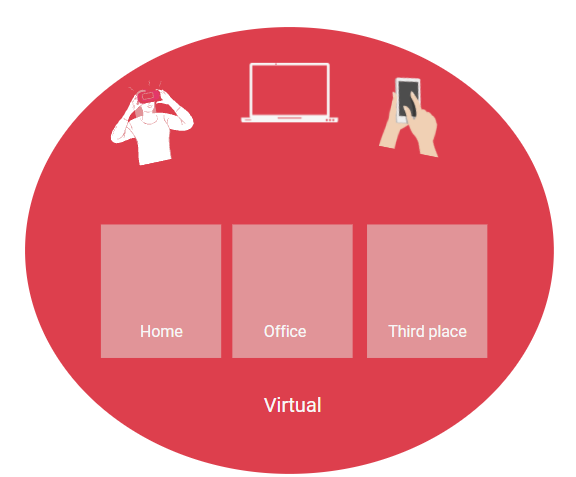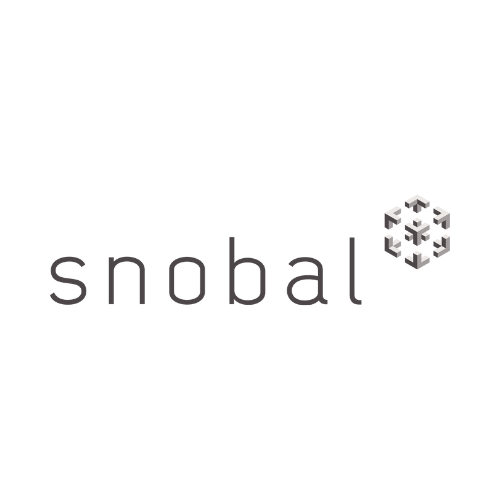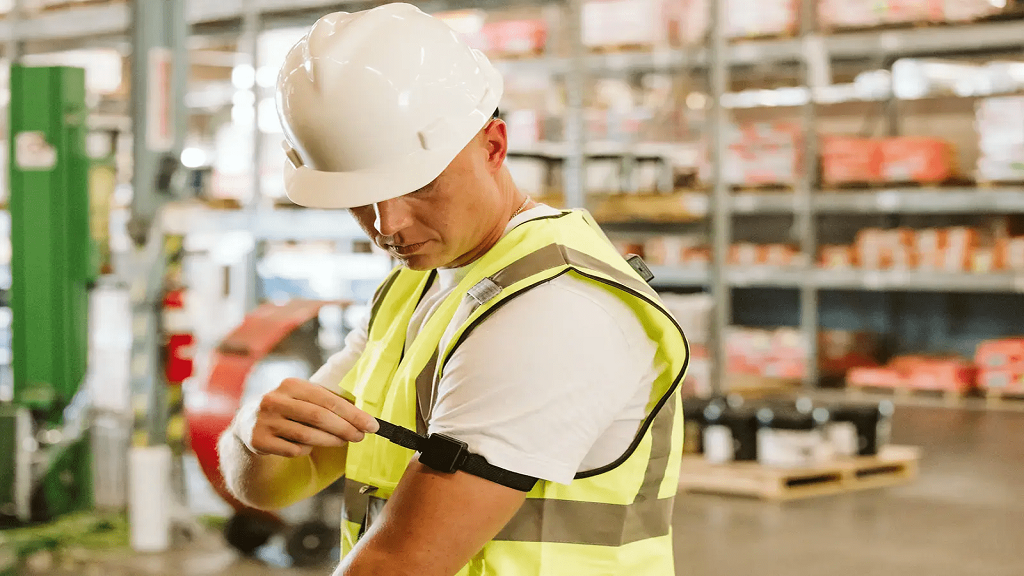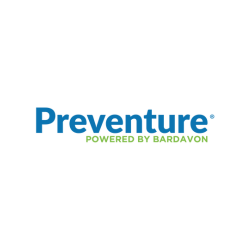As organisations seek to land on a suitable workplace model for their business, assessing the place and impact of the Virtual Workplace in any new model is key.
The office will continue to be an important site for workplace collaboration, reports a new insight piece by PwC, but it won’t be the only space.
To help organisations take the next step, PwC has collaborated with international design firm Hassell to explore what the future workplace might look like.
The other place?
It paints an interesting picture of the fit-for-the-future workplace. In the article, PwC outlines that there will be three key places -the home, the office, and the third place, for example, a co-working space or cafe. All these places are physical.
It causes us to wonder that perhaps what the world now looks like is that virtual is a shadow connecting all these physical places and people work connected across the different ‘places’?
Source: Inspired by the graphic in Changing Places: Designing hybrid offices that work, PwC, 2021.

Workplace models
The PwC insight piece reflects a document by Hassel which reviewed the latest academic research and their insights on the future of the workplace.
The document “Remote? In-person? Hybrid? How to structure the workplace after COVID” has Hassel compare five workplace models spanning:
1) As it Was 2) Turbocharged ABW 3)Clubhouse 4)Hub and Spoke and; 5) No office.
Again all the workplace models portrayed revolve around a physical place.
Fit for Future workplaces and the metaverse
This is interesting in the context of a new research paper – “Into the Metaverse” – by insight agency Wunderman Thompson.
The paper evokes now as a time where more and more of our lives are spent virtually, and “it’s becoming harder and harder to distinguish “real” life from a life lived digitally.” People are moving seamlessly between the physical and the virtual doing what they need to do – communicate, collaborate and work.
In terms of the fit for the future workplace we are moving to a time where the workplace is seen not as a physical space but rather as a space (both virtual and physical) where people do things.
The shift to remote work is giving rise to companies prioritizing virtual environments…The COVID-19 pandemic is reshaping the future of work, pointing to a flexible hybrid model. “We anticipate never going back to five days a week in the office. That seems very old-fashioned now,” stated Alan Jope, CEO of Unilever…”
Source: New trend report: Into the Metaverse. Wunderman Thompson, 2021.
Because virtual environments are limited only by imagination it means organisations won’t be restricted by the physical limitations of office size, office design, structural columns – or budget.
Virtual environments can be created that reflect the company brand. These environments can be updated regularly and extended.
This seamless move between physical and virtual will create new business models, careers, and revenue models.
New opportunities, markets, and careers
Indeed design technology specialist Chloe Sun of HOK, a global design, architecture, engineering firm, recently wrote a piece in archdaily.com outlining how with the tech available and the rise of the metaverse, architects can move from designing physical workplaces to also designing virtual workplaces.
The metaverse Sun goes on to say it provides architects with the opportunity to move from selling their time to selling scaleable products and solutions.
For architects, the metaverse is a virgin territory full of possibilities and a Utopia without the constraints of the physical world…Architects can also build digital assets like cities, buildings, furniture, sculptures, point clouds, textures..etc, and sell them multiple times to virtual worlds, games, and movies.”
You could say it’s all part of the rise of the workplace metaverse. What’s your organisation’s take on the workplace moving into the new normal?
.png?width=190&name=IPA%20Logo%20Transparent%20(Hi-Res).png)




